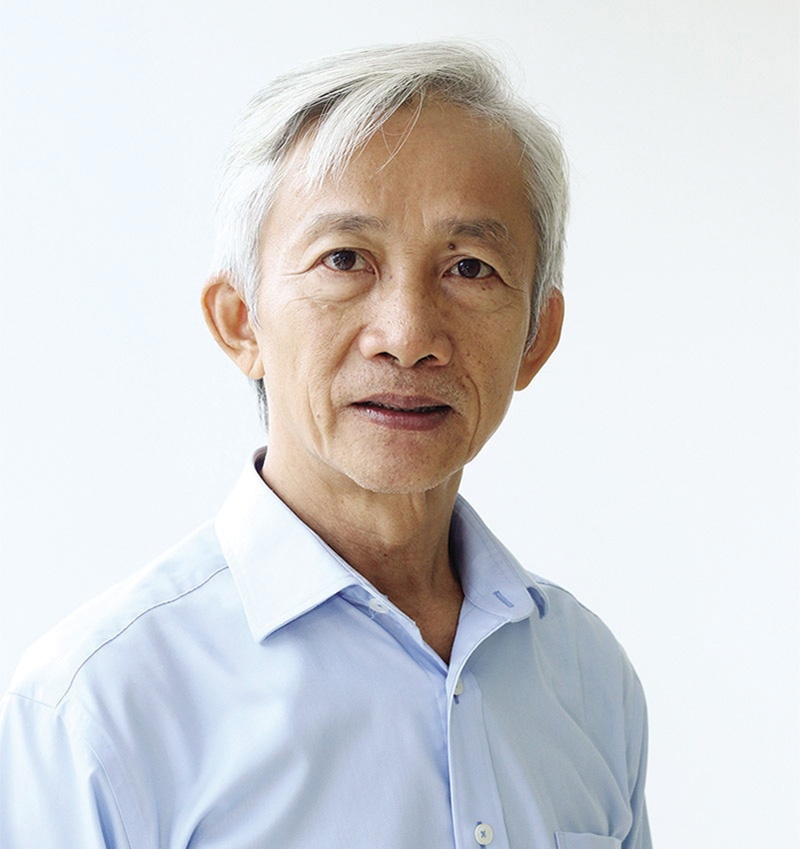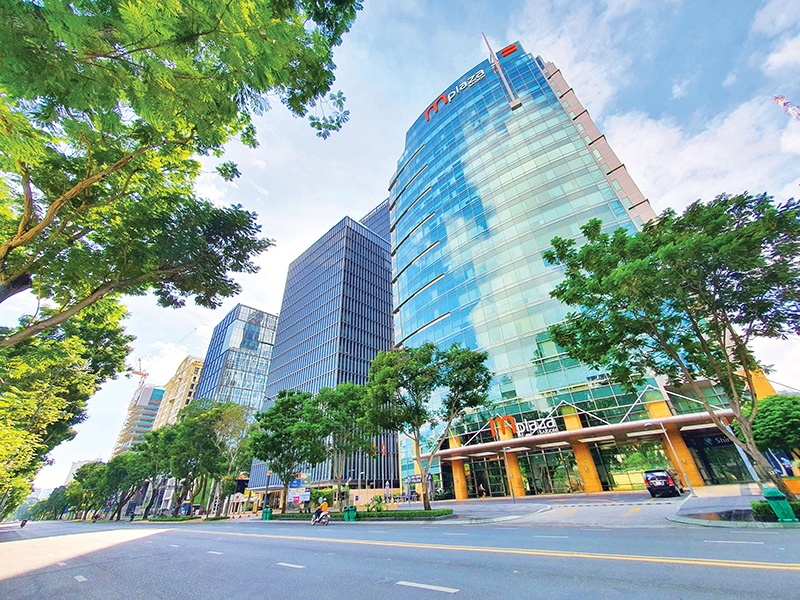The right time to fully reopen the economy
How do you perceive the proposed moves by Ho Chi Minh City authorities to gradually reopen the economy?
 |
| Professor Dr. Tran Ngoc Tho |
Ho Chi Minh City has put forth the principles and stages to reopen the economy from September 15. Opening to a level that is safe is the message not only Ho Chi Minh City but also the approach taken by many other countries. As the pandemic is still a risk, the city has also considered the continuity of social distancing, matching the actual situation in different areas, along with ensuring social welfare.
Many governments have increasingly encouraged people to return to normal life and shift into a new normal. Scientists, however, still warn that it might be too early to have in place some strategies to get out of the pandemic.
Why might reopening be deemed too early and what are the main concerns?
In New Zealand, for example, 90 per cent of surveyed people said that they did not have many expectations about life resuming as usual even after being fully vaccinated against COVID-19 – and that country has avoided the worst of the pandemic. This is partly because there are a myriad of unanswered questions about the emergence of viruses and scientists have yet to fully understand the causes behind protracted symptoms of hundreds of thousands of infected patients all over the world.
There are also questions around immune duration after being vaccinated as well as protection level against newer variants like Delta.
Generally, the idea of working out plans on pandemic control and economic rebound is necessary. But the details, both good and bad, tell the story. Health experts assumed that once everybody is eligible for vaccination, it is like they have a shield for themselves. But in countries with still low COVID-19 vaccine coverage like Vietnam, particularly in the southeastern region, current vaccination coverage is not yet strong enough.
Vaccination does not exclude hospital admissions and mortality altogether. Having community immunity may prove unlikely and cases of infection can still rise among unvaccinated people. We should not put out too ambitious a target with many localities yet to get access to vaccine sources.
Recent data reflects positive movements, particularly regarding hospital admissions and deaths in Ho Chi Minh City. What’s your assessment on this?
That is good news, and if things coincide with our expectations, in the early months of 2022, city dwellers may be able to hail a New Year full of hope. Scientists, however, also warn that everything may remain uncertain with the Delta variant.
In mid-2021, an epidemiologist at the UK’s Imperial University presented a forecast model about COVID-19 death cases until June 2022, showing that the error coefficient might be 10-fold, from about 20,000 to 200,000 cases. The hidden factors include vaccine efficiency against the Delta and other new variants, immune durability of infected cases and vaccination, methods of infection, and the level that people maintain preventive measures like wearing face masks or social distancing after lockdown mandates are relaxed.
These hidden factors make forecasts less secure. These same warnings had in fact contributed to the UK government’s postponing lockdown removal by an additional one month earlier this year.
 |
| The quiet city streets of the past couple of months are set to soon be a thing of the past. Photo: Le Toan |
What would reopening the economy actually mean for Ho Chi Minh City?
Reopening does not mean that we would come back to normal like before the pandemic began. For example, people should not expect to freely be able to head to a stadium to watch a World Cup qualifying football game in Vietnam next year.
The pandemic forecast model of the Australian government working in tandem with the Doherty Institute made an assumption that the pandemic broke out from 30 initial infections in the community, and based on current circumstances. With an assumed 70 per cent vaccine coverage among the adults, the forecast resulted in nearly 386,000 cases showing infection symptoms and over 1,450 deaths in six months. It is noteworthy that the model developers just made the assumption with relaxed safety and community health intervention measures at a certain level, not yet mentioning the reopening factor.
Businesses are exhausted with more and more firms going bankrupt. A number of foreign businesses are reportedly considering placing orders with other partners, even shifting their manufacturing plants elsewhere. What are the consequences of this?
Ho Chi Minh City’s administration and the government are facing mighty challenges. The Delta variant has changed the game and turned around all calculations. One single principle is that we should convince the foreign business community and everything must be based on data.
Neil Bradley, executive vice president and chief policy officer at the US Department of Commerce, said that a key to returning to a fully open economy is defeating COVID-19 and defeating this Delta variant. He said that the more people who get vaccinated, the closer we’ll be to putting the pandemic in the rearview mirror. He also thinks it’s really important that local officials who understand what’s going on with transmission in their community adopt mitigation measures.
Like many developing nations, Vietnam has rather low vaccine coverage. So it would face the threat of infections flowing into hospitals, offices, depleting labour forces, exacerbating illness among children and vulnerable people, and creating new vaccine-resistant perilous variants. These repercussions might lead to more lockdowns and, by essence, casting detrimental impacts on those who have insisted on reopening.
What are the real impediments for the city at the moment?
We are facing a triple-threat of a situation – people’s health, reopening the economy, and freedom of travel. We could maximise one or two out of these values, but having all three simultaneously may be impossible. If we accept performing production commensurate with safety level, it would mean we accept the first two values; and freedom of travel may have to be restricted to some extent.
The city’s administration needs to compromise with the people about this. In the near time, we must consider the use of travel passes and serious adherence to the 5K message. It is too early to think about a full reopening at the moment. Instead, we might consider step-by-step loosening social distancing measures, along with performing production commensurate with the safety level.
Some have said that Vietnam needs to consider the benefits and the drawbacks of COVID-19 prevention policies in loosening lockdown measures. What’s your view on that?
According to the latest study from the US Centers for Disease Control, meeting biological criteria is just one step in the decision on suppressing or eliminating the pandemic. Ho Chi Minh City bases its actions on World Health Organization criteria to decide on the next steps after September 15. The study also indicates that due to finite medical resources and industrial development of a nation, it would not be easy to find the right answer to the application of benefit/cost analytical methods in the decision to either suppress or eliminate the pandemic.
Looking at the case of Ho Chi Minh City, it proves true. The medical system incurs overload. The physical and mental health of doctors and frontliners has decreased significantly, whereas businesses face financial exhaustion after a period of exercising stay-at-work schemes. It makes drawing economic analyses when performing the targets of resuming production and fighting the pandemic extremely difficult.
Some argue that we would need to accept a certain mortality rate as a natural screening process towards the most vulnerable people before being able to come back to a new normal. This argument is morally unacceptable, as economic indexes could not be justified for ethical matters. This would lead to social division. In fact, there exist some ‘sacred limits’ by which science must be vetoed by social judgements about what would be or wouldn’t be accepted.
What the stars mean:
★ Poor ★ ★ Promising ★★★ Good ★★★★ Very good ★★★★★ Exceptional
 Tag:
Tag:
Themes: Together We Win
- Greater Mekong Subregion executives to discuss sustainable tourism
- TCPVN donates 1,200 medicine bags to COVID-19 patients in southwest
- AB InBev supports orphans with scholarships amid COVID-19
- Evaluating the reach of support in turbulent times
- Gamuda Land grants “Back to School” scholarships to support disadvantaged students
Related Contents
Latest News
More News
- Ho Chi Minh City backs $2 billion AI data centre with dedicated task force (January 06, 2026 | 08:43)
- PM sets January deadline for high-speed rail consultant (January 06, 2026 | 08:40)
- New decree spurs on PPP implementation (December 31, 2025 | 19:01)
- Global alliance develops $1 billion AI data centre network in Vietnam (December 30, 2025 | 10:08)
- Standing out in the Chinese outbound investment wave (December 29, 2025 | 10:29)
- Bright spots obvious in foreign investment mission (December 29, 2025 | 09:00)
- Ho Chi Minh City hits $8.37 billion in FDI (December 29, 2025 | 08:28)
- Vietnam and UK cooperation backs finance talent for IFCs (December 27, 2025 | 16:31)
- Global partnerships key to Vietnam’s IFC development (December 26, 2025 | 16:18)
- Vingroup pulls out of bid to invest in North-South high-speed railway (December 26, 2025 | 11:42)























 Mobile Version
Mobile Version